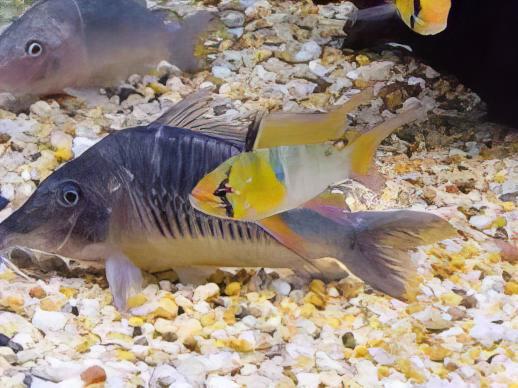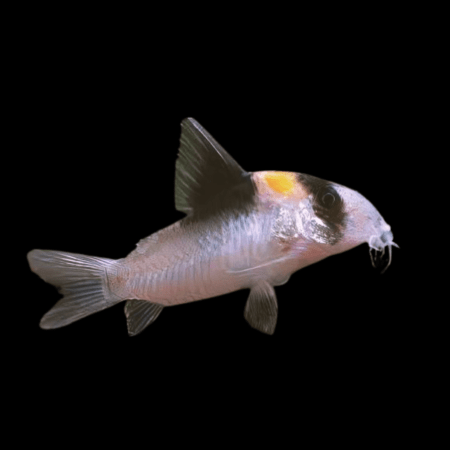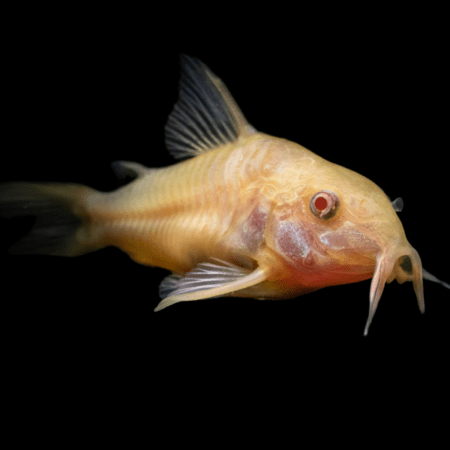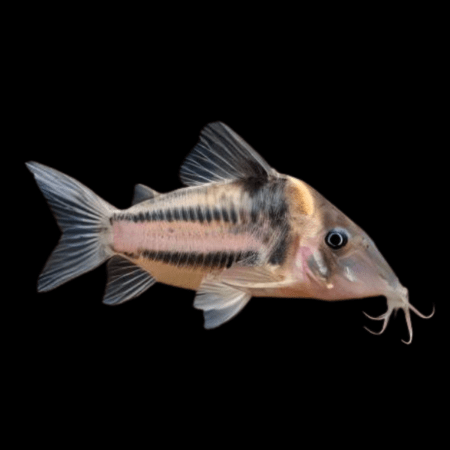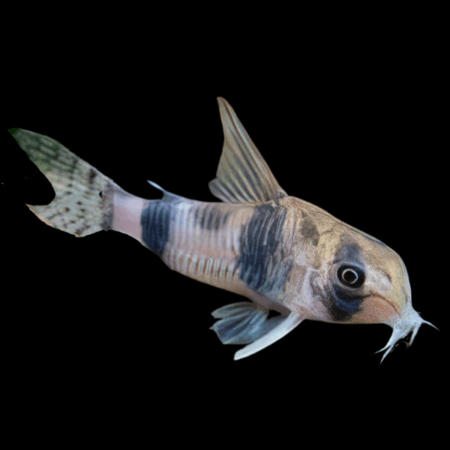Description
Giant Corydoras Multiradiatus
Overview
| Synonyms | Chaenothorax multiradiatus |
| Distribution | Native to Ecuador and Peru. |
| Maximum Size | 12cm (4.7″) |
| Temperature | 15-25°C |
| Water Parameters | Captive-raised specimens will adapt to a wide range of water conditions, providing that good water quality is maintained. |
| Compatibility | Community |
| Lighting | No special requirements |
| Sexual Dimorphism | Females are significantly larger and appear wider when viewed from above. Males are slimmer and often have an extended dorsal fin. |
| Feeding | Catfish pellets, granules, flake and frozen foods |
Description
Care
Hog-nosed Brochis are ideal catfish for the larger, peaceful community aquarium. Must be kept on a soft sand substrate and maintained in groups of 5 or more due to shoaling nature. Plenty of shady planted areas should be provided, but as this is a species that loves to dig, attaching plants such as Anubias and Java Fern to bogwood can be more successful than planting into the substrate. Also include some rocky caves and pieces of driftwood to give the fish additional cover. Corydoradinae species have the ability to breathe air intestinally, so a small gap should be left between the surface of the water and the cover slides in order for the fish to come up to the surface and take air in; it may do this numerous times per day. As these fish grow relatively large, a deeper than average tank (18″ or so) will be appreciated. Ensure the aquarium has tight fitting coverslides as Hog-nosed Brochis are capable of jumping. Good filtration and frequent partial water changes are a must for this species, as they can be rather sensitive to elevated nitrate levels. Ideal companions could include angelfish, dwarf cichlids, tetras, or medium-large peaceful loach species. Handle these fish with care as the sizeable pectoral and dorsal spines can easily become tangled in netting. These fish are usually imported at a length of 5cm or larger, and they do tend to command a relatively high price tag – something to bear in mind as a good sized shoal is required for the wellbeing of these sociable fish. Brochis species can be distinguished from Corydoras species by the presence of more dorsal fin rays (10 or more in Brochis species, fewer in Corydoras). Brochis multiradiatus differs from the other species of Brochis by its pronounced “hog-like” snout and larger number of dorsal fin rays.
Feeding
Catfish pellets and other sinking foods are a good staple, with frozen foods such as Cyclops, mosquito larvae and Daphnia a welcome treat.
Breeding
Mature pairs can be triggered into spawning by performing a large, slightly cooler water change. The pair will adopt the classic “T position” where the male fertilises the eggs that are held between the females pelvic fins. The adhesive eggs will then be deposited onto plants, decor, or the sides of the aquarium etc and the process repeated. The eggs generally take 3-4 days to hatch after which time the tiny fry should be offered finely powdered first foods. A few days later they will be able to take newly hatched brineshrimp. To avoid predation and ensure a higher success rate, many fishkeepers move the parents to another aquarium after the eggs have all been deposited.







